Nov
19
2013
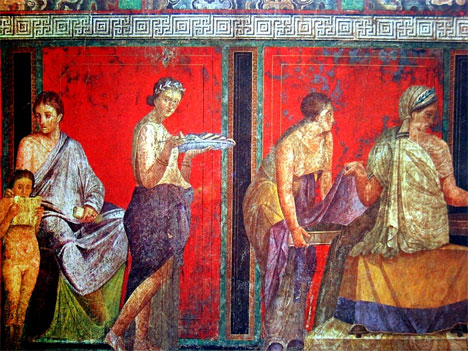 Part III – The Feast of Clouds
Part III – The Feast of Clouds
“But Peter said, ‘I have no silver and gold, but what I do have I give to you.”’ (Acts 3:6)
Israel consistently failed to keep the final feast, the Feast of Sukkot, because she took her calling to be elitist rather than priestly. She thought her calling, gifts and purification were for herself, rather than for the healing of the nations.
Continue reading
Comments Off | tags: Acts, Babylon, Baptism, Covenant Theology, Daniel, Esther, Feasts, Lampstand, Paul, Pentecost, Tabernacles | posted in Bible Matrix, Biblical Theology, The Last Days, The Restoration Era
Nov
17
2013
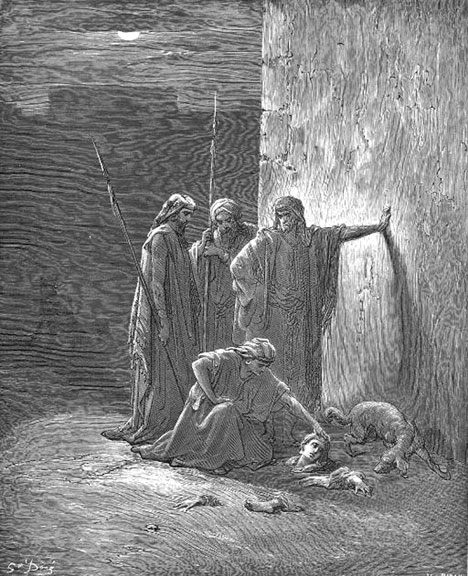
Who are the dogs and pigs whom Jesus warns His hearers against in Matthew 7?
[This post has been refined and included in Sweet Counsel: Essays to Brighten the Eyes.]
Continue reading
1 comment | tags: Communion, Covenant Theology, Lampstand, Matthew, Sermon on the Mount, Tabernacle | posted in Bible Matrix, Biblical Theology
Nov
11
2013
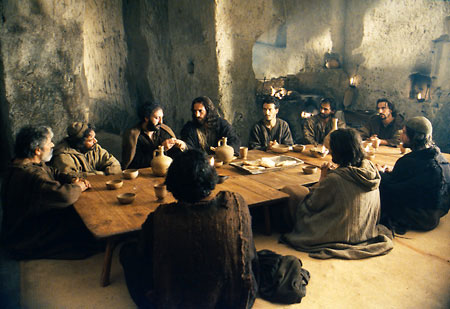
“The Lord’s Table is for dangerous people.”
If you are going to baptize infants, it makes sense that you would also allow them to take Communion. Baptism brings one into the priesthood (through the Laver) to the court of God, and Communion is fellowship in the priestly kingdom. To unite the two is consistent—as consistent as the two pillars flanking the threshold of Solomon’s Temple.
Continue reading
Comments Off | tags: Baptism, Circumcision, Communion, Ecclesiology, Federal Vision, God's Kitchen, James Jordan, John, Lampstand, Passover, Sacraments, Tim Gallant | posted in Biblical Theology
Aug
26
2013
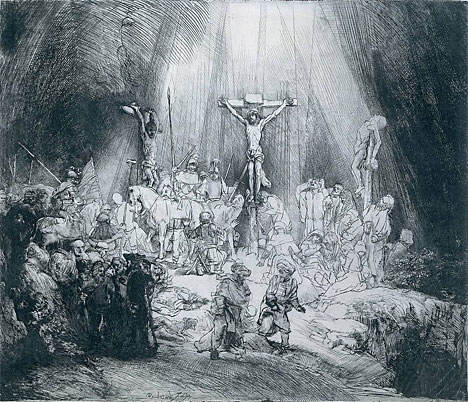
“Then I saw heaven opened, and behold, a white horse! The one sitting on it is called Faithful and True, and in righteousness he judges and makes war… From his mouth comes a sharp sword with which to strike down the nations, and he will rule them with a rod of iron.” (Revelation 19:11-15)
The Bible is big on fruit. The first “Covenant Ethic” was a prohibition on fruit from a particular tree. The transgression of Adam resulted in curses upon the fruit of the Land and the fruit of the womb. The book which describes the end of the Old Covenant, the Revelation, shows the dragon attempting to eat the son of Adam, the fruit of the womb, and then to devour the fruit of the Land, the apostolic “firstfruits” Church. [1] But where is the forbidden tree?
Continue reading
Comments Off | tags: AD70, Communion, Firstfruits, Lampstand, Revelation, Tabernacle, Temple | posted in Bible Matrix, Biblical Theology, The Last Days
Aug
22
2013

What does “Under the Sun” mean in Ecclesiastes?
Genesis 1 tells us that the purpose of the sun, moon and stars is to act as kingly governors of the physical realm. They were created at the centre of the Creation Week (Day 4), before Man, yet Man was not to bow down to them.
And beware lest you raise your eyes to heaven, and when you see the sun and the moon and the stars, all the host of heaven, you be drawn away and bow down to them and serve them, things that the Lord your God has allotted to all the peoples under the whole heaven. (Deuteronomy 4:19)
The reason for this is that although Genesis 1 presents Man as part of the physical order, Genesis 2 moves him beyond this to a social order. When Adam perceives that he is without a mate, he is “bowed down,” physically humbled, that Woman might be constructed. Adam’s order would not be like that of the animals. His rule from its very beginning would be “sacrificial.” Men would not bow to the stars (or to idols) but to each other, because all men are images, reflections, of God. Adam was to subdue the physical order and bring it into submission, and yet submit to other men. The sinful reverse of this is the worship of the physical order (which is yet inherent in the scientism of our own age) and the tyrannical subjugation of our fellow men, which is exactly what happened in Genesis 3. Physical, Social, Ethical.
Continue reading
Comments Off | tags: AD70, Covenant Theology, Lampstand, Revelation, Solomon, Tabernacle | posted in Bible Matrix, Biblical Theology, Q&A, The Last Days
May
13
2013
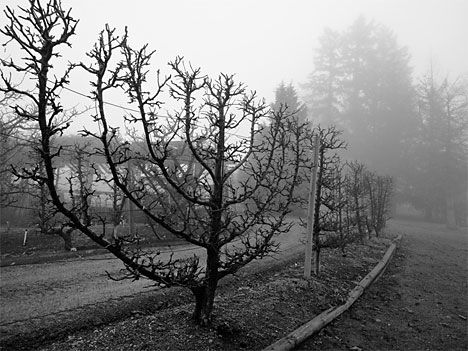 The letters to the pastors of the seven churches in Asia are a prophecy of the history of the Church, according to dispensationalist Bible teachers. For interpreters who are committed to a “literal” hermeneutic, this is bending the rules in the direction of a “literary” hermeneutic, which is excellent. However, they apply the letters to the wrong future, and overlook the obvious allusions to the past.
The letters to the pastors of the seven churches in Asia are a prophecy of the history of the Church, according to dispensationalist Bible teachers. For interpreters who are committed to a “literal” hermeneutic, this is bending the rules in the direction of a “literary” hermeneutic, which is excellent. However, they apply the letters to the wrong future, and overlook the obvious allusions to the past.
Continue reading
2 comments | tags: Dispensationalism, Lampstand, Literary Structure, Revelation | posted in Bible Matrix, Biblical Theology, The Last Days
Mar
6
2013
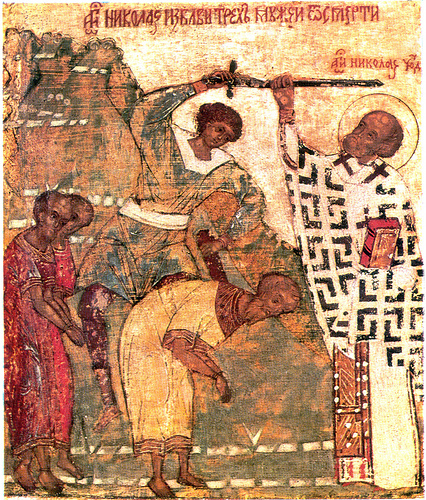 Part 1 here.
Part 1 here.
Bible commentators will tell you that Paul’s epistle to the Ephesians contains great riches. Unfortunately, without any reference to its Mosaic literary structure, it comes across as a jumble of jewels in a treasure chest. However, analysis of the structure allows us to appreciate the fine networks and chains of thought in the literary architecture — and also the clever allusions contrasting old Israel with the New. It also demonstrates Jesus’ fulfillment of the Mosaic Law.
Continue reading
Comments Off | tags: Balaam, Ephesians, Lampstand, Leviticus, Literary Structure, Revelation, Revelation 20 | posted in Bible Matrix, Biblical Theology, The Last Days
Apr
3
2012
or As Far as the East is from the West
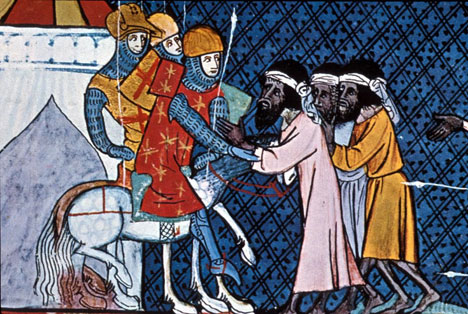
“That very day Pilate and Herod became friends with each other, for previously they had been at enmity with each other.” (Luke 23:12)
“Secular humanism and Islam are merely the bipolar moods of Christless Christianity. They can be united only in suicide.”
Getting a grip on the Tabernacle layout helps us understand the architecture of Creation, the history of mankind and the structure of the entire Bible. After reading Mark Steyn on the Islamic/secular conflict in Europe, I was thinking that the same “Tabernacle” categories can be found in the world today. Whatever we do, however much we distort the truth, we are still bound by the walls and furnitures set up in Genesis 1. And, in my humble opinion, the light this sheds on the current conflict is not only revealing concerning its true nature, but it also helps us to predict its future.
Continue reading
Comments Off | tags: AD70, Church History, Culture, David P. Goldman, Herod, Incense Altar, Islam, Lampstand, Mark Steyn, Martyrdom, Melchizedek, Tabernacle | posted in Bible Matrix, Biblical Theology, The Last Days
Apr
2
2011
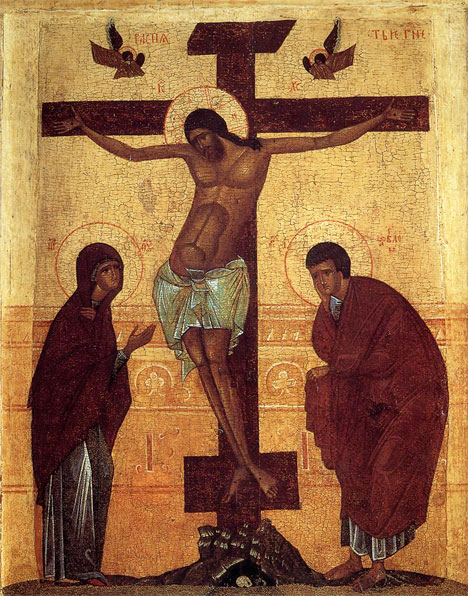
“The priest shall take some of the blood of the trespass offering, and the priest shall put it on the tip of the right ear of him who is to be cleansed, on the thumb of his right hand, and on the big toe of his right foot.” Leviticus 14:14
This is one of those weird things we Christians don’t like to talk about. But James Jordan loves to talk about the weird things. He says somewhere that these three bloody points on the body plus circumcision make a cross. Well, there are certainly four points, but does it look like a cross to you?
Continue reading
Comments Off | tags: Genesis, Holy Spirit, James Jordan, Lampstand, Leviticus, Tabernacle | posted in Biblical Theology
Jan
28
2011
or Goblet of Fire
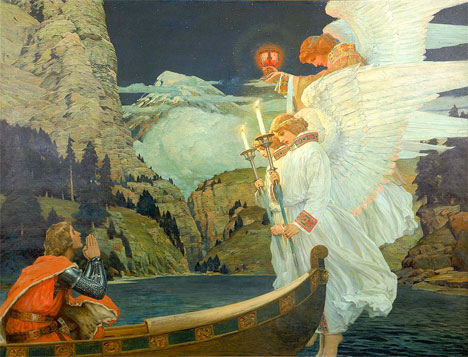
“And the times of this ignorance God winked at;
but now commandeth all men every where to repent…” Acts 17:30
Reading the Bible without an understanding of Creational and Covenant structures is like watching test cricket without knowing the rules. It’s not unusual for even the best commentators to be distracted by something as inconsequential as a lost seagull. But every moment is part of a bigger picture. Isaiah can seem tedious at times, but it’s a long game. Let’s look at Isaiah 4:2-6, which relates the purging of exiled Israel to the jealous inspection in Numbers 5. In this case, she comes up trumps.
Continue reading
1 comment | tags: AD70, Belshazzar, Compromise, Daniel, Intermarriage, Isaiah, Lampstand, Literary Structure, Numbers, Numbers 5, Pentecost, Pharisees, Systematic typology, Tabernacle, Witness | posted in Bible Matrix, Biblical Theology, The Last Days, The Restoration Era
 Part III – The Feast of Clouds
Part III – The Feast of Clouds
































